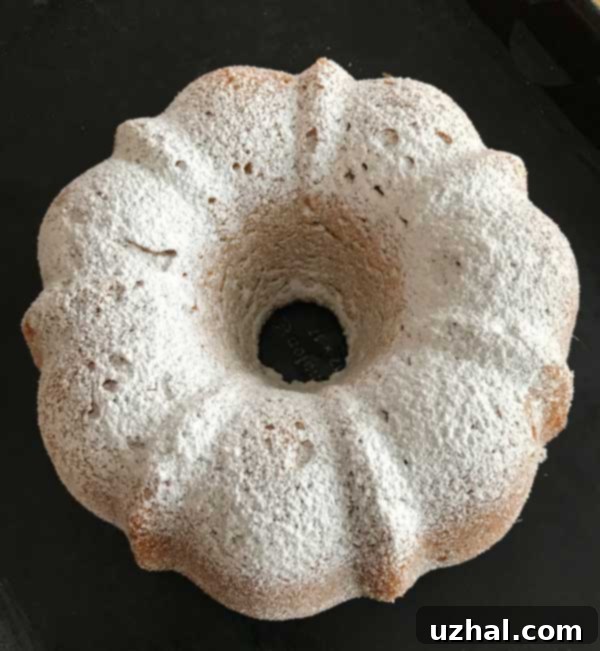Bake the Best Tunisian Orange Olive Oil Cake: A Zesty, Moist, and Easy Zingerman’s Recipe
Are you searching for a unique cake that’s both incredibly moist and bursting with vibrant citrus flavor? Look no further than the Tunisian Orange Olive Oil Cake! This exquisite recipe, lovingly shared from the renowned Zingerman’s Bakehouse Cookbook, offers a delightful departure from traditional butter-based cakes. It’s the perfect treat for any occasion, whether you’re enjoying a quiet afternoon with a cup of tea, or serving it alongside fresh berries and a dollop of whipped cream at a gathering. Its rustic charm and sophisticated flavor profile make it an instant favorite in any dessert repertoire.

The magic of this particular cake lies in two key ingredients: a whole, pulped orange and high-quality extra virgin olive oil. Unlike many recipes that call for just zest or juice, this cake incorporates the entire orange, peel and all (after trimming the ends and removing any seeds). This innovative approach creates an unparalleled depth of flavor and moisture that truly sets it apart. This method is a hallmark of many Mediterranean and North African desserts, where every part of the fruit is celebrated to achieve maximum taste and aroma. The result is a cake that is both wonderfully aromatic and incredibly tender, with a subtle tang that brightens the palate.
This fantastic recipe made its way to me thanks to my good friend Taneka, who was kind enough to send me the Zingerman’s Bakehouse Cookbook after attending a signing at their celebrated bakery in Ann Arbor, Michigan. Zingerman’s is renowned for its commitment to traditional baking methods and exceptional ingredients, and this cake perfectly embodies their philosophy. It was one of the first recipes I eagerly tried from the book, and it immediately became a staple in my kitchen. The title “Tunisian Orange Olive Oil Cake” naturally suggests using Tunisian olive oil, but don’t fret if you don’t have it readily available. I successfully used a delicious Greek olive oil, and the results were absolutely perfect, proving the recipe’s wonderful adaptability.
Furthermore, while the cookbook suggests a 9-inch round pan, I opted for a 6-inch Bundt pan, achieving fantastic results without needing to adjust the baking time. This flexibility makes it even more appealing for home bakers, allowing you to use the bakeware you have on hand. Whether you’re new to baking with olive oil or a seasoned pro, this cake offers a delightful and surprisingly simple experience with a gourmet outcome.
Choosing the Best Olive Oil for Your Cake: A Guide to Flavor Profiles
When it comes to baking with olive oil, many people assume any olive oil will suffice. However, just as with cooking, the type of extra virgin olive oil (EVOO) you choose can significantly impact the final flavor and texture of your cake. This isn’t just a substitute for butter; it’s a star ingredient that contributes its own unique characteristics.
We often find ourselves experimenting with various olive oil brands, and for our daily use – especially for dipping crusty bread or dressing salads – we gravitate towards those with a strong, distinctive, and sometimes peppery character. These robust oils are fantastic when their flavor is meant to be prominent. Sometimes, though, we acquire an olive oil that’s a touch too mild or perhaps too delicate for our robust dipping preferences. These milder varieties are absolutely perfect for baking, and this Tunisian Orange Olive Oil Cake is a prime example where a subtle, fruity extra virgin olive oil truly shines. It infuses the cake with a delicate, almost undetectable, richness that complements the intense orange flavor without overpowering it. The goal is to enhance, not compete.
A good rule of thumb is to use an olive oil that you would enjoy eating on its own, but perhaps one that isn’t intensely bitter, aggressively grassy, or overly pungent. Look for terms like “fruity,” “mild,” or “buttery” on the label. A good quality, mild EVOO will lend the cake an incredibly tender crumb, a beautiful golden hue, and a nuanced flavor that you won’t achieve with vegetable oil or even butter. Beyond flavor, using olive oil contributes to the cake’s remarkable moistness and helps extend its shelf life naturally, making it a healthier and more flavorful alternative that stays fresh longer.

The Magic of the Whole Orange: Unlocking Intense Flavor and Unbeatable Moisture
One of the most captivating and unique aspects of this Tunisian Orange Olive Oil Cake is its innovative use of a whole orange. This isn’t merely about adding citrus zest for a hint of aroma or juice for moisture; it’s about harnessing the full aromatic power, natural sweetness, and fibrous texture of the entire fruit. When the whole orange, including the peel and pith, is processed into a fine pulp, it releases all its essential oils, sweet juices, and beneficial fibers, infusing every single bite of the cake with an intense, authentic orange flavor that no extract or simple zest could ever replicate.
Beyond the incredible flavor, using the whole orange contributes significantly to the cake’s famously moist and tender crumb. The natural pectin in the orange acts as a binding agent, helping to create a beautifully structured yet incredibly soft and yielding texture. This method also means less waste and a much simpler preparation process, as you don’t have to meticulously zest the fruit and then juice it separately. Just a quick trim of the ends, a quartering (and a quick check for seeds), and into the food processor it goes – pure culinary genius that saves time and maximizes flavor!
This whole-fruit technique results in a cake that is remarkably aromatic and incredibly satisfying. The slight bitterness from the pith and peel, when finely processed and balanced with sugar, adds a sophisticated depth that elevates the overall flavor profile beyond what a typical orange cake offers. It’s a testament to how simple, natural ingredients, used thoughtfully, can create extraordinary results.
Expert Baking Tips for a Perfect Tunisian Orange Olive Oil Cake Every Time
To ensure your Tunisian Orange Olive Oil Cake turns out perfectly every time, achieving that ideal balance of moistness, flavor, and tender crumb, here are a few extra tips to keep in mind, drawing on years of baking experience:
- Orange Selection is Key: Always choose a very large, seedless orange. Navel oranges are often the best choice because they are typically seedless, have a thick rind (which carries a lot of flavor), and offer a good balance of sweetness and acidity. Ensure the orange is ripe, fragrant, and free of blemishes. Wash it thoroughly under running water, scrubbing gently, as you’ll be using the entire fruit.
- Achieving the Right Pulp Consistency: When grinding the orange in a food processor, aim for a very fine, almost uniform pulp. It should be consistent in texture, not chunky, but also not so liquid that it resembles juice. A powerful food processor will make this step quick and easy. If your pulp seems too wet, you can drain a tiny bit of excess liquid, but generally, the moisture is crucial for the cake.
- Mindful Mixing: Once you add the flour, resist the urge to overmix the batter. Overmixing develops the gluten in the flour too much, which can lead to a tough, rubbery cake. Mix just until the ingredients are combined and no dry streaks of flour remain. A few small lumps are perfectly acceptable and often preferable to an overmixed batter.
- Thorough Pan Preparation: Whether you choose a classic Bundt pan or a simple round cake pan, thorough greasing and flouring are absolutely essential for an olive oil cake. Olive oil cakes, while wonderfully moist, can sometimes be prone to sticking if the pan isn’t properly prepared. For Bundt pans, pay extra attention to all the intricate nooks and crannies, ensuring every surface is lightly coated with grease and flour. You can also use a baking spray with flour for ease.
- The Reliable Toothpick Test: The classic toothpick or wooden skewer test is your best friend for checking doneness. Insert a toothpick into the center of the cake; if it comes out clean or with a few moist crumbs attached, your cake is done. If it comes out with wet batter, continue baking for a few more minutes and test again. Avoid overbaking at all costs, as this is the primary culprit for a dry cake.
- Patience During Cooling: Allowing the cake to cool in the pan for about 10-15 minutes before attempting to invert it is crucial. This cooling period gives the cake’s delicate structure time to set, making it much easier to release cleanly from the pan without breaking or crumbling. After the initial cooling, carefully invert it onto a wire rack to cool completely.
Serving Suggestions & Creative Customization
This Tunisian Orange Olive Oil Cake is wonderfully versatile and delicious on its own, simply dusted with powdered sugar for an elegant finish. However, you can elevate it further with thoughtful accompaniments. Serve individual slices with a generous dollop of freshly sweetened whipped cream, a scoop of premium vanilla bean ice cream, or a vibrant side of mixed fresh berries. The tartness of berries like raspberries, blueberries, or even sliced strawberries provides a beautiful contrast to the cake’s sweet citrus notes, creating a balanced and refreshing dessert.
For an extra touch of Mediterranean flair, you could drizzle a light citrus glaze over the top (easily made by mixing powdered sugar with a little fresh orange juice) once the cake has cooled. Alternatively, for a truly gourmet presentation, a tiny bit more high-quality, peppery olive oil drizzled just before serving can add an unexpected layer of flavor and a beautiful sheen. This cake also pairs beautifully with a strong cup of coffee, a fragrant herbal tea, or even a glass of sparkling wine.
Don’t be afraid to experiment with different types of oranges if you’re feeling adventurous. Blood oranges will lend a stunning reddish hue and a slightly different flavor profile. You could even try a mix of orange and lemon for a brighter, more complex citrus zing. This cake’s dense, moist texture makes it satisfying, yet its bright orange flavor keeps it feeling light and refreshing, making it an excellent choice for brunch, an afternoon snack, or a sophisticated dessert after dinner. It’s a cake that truly shines in its simplicity and versatility.
Recipe: Tunisian Orange and Olive Oil Cake

Tunisian Orange and Olive Oil Cake
Cookie Madness
Pin Recipe
Ingredients
- 1 very large seedless orange 320 grams
- 2 large eggs
- 1 cup granulated sugar 200 grams
- ½ cup plus 1 tablespoon extra virgin olive oil 130 grams
- ½ teaspoon salt
- 1 tablespoon baking powder
- 2 cups plus 1 tablespoon all-purpose flour 290 grams
Instructions
-
Preheat your oven to 350 degrees F (175 C). Prepare your chosen baking pan: thoroughly grease and flour either a 6-inch Bundt pan or a 9-inch round cake pan. Ensure all surfaces, especially crevices in a Bundt pan, are well-coated to prevent sticking.
-
Prepare the orange: Wash the very large seedless orange well under running water. Carefully cut off both ends of the orange. Then, cut the orange into quarters. Take a moment to inspect each quarter and remove any seeds you might find. Place the orange quarters into a food processor and pulse until it forms a very finely ground, almost uniform pulp. Set this vibrant orange pulp aside.
-
Combine wet ingredients: In a large mixing bowl, vigorously whisk together the 2 large eggs and 1 cup of granulated sugar until the mixture is light in color, thick, and slightly fluffy. This incorporates air and helps create a tender cake. Gradually pour in the ½ cup plus 1 tablespoon of extra virgin olive oil while continuing to whisk, ensuring it is thoroughly blended into the egg and sugar mixture. Finally, stir in the prepared orange pulp until it is evenly and completely incorporated throughout the wet ingredients.
-
Add dry ingredients: To the wet mixture, add the ½ teaspoon of salt and 1 tablespoon of baking powder. Whisk briefly, but thoroughly, to ensure the baking powder is evenly distributed and no clumps remain; this is crucial for an even rise and texture. Next, add the 2 cups plus 1 tablespoon of all-purpose flour. Using a spatula or wooden spoon, stir gently just until the flour is fully incorporated and the batter is smooth. Be very careful not to overmix, as this can lead to a tough cake.
-
Bake the cake: Pour the finished batter evenly into your thoroughly prepared pan. Place the pan into the preheated oven and bake at 350 degrees F (175 C) for approximately 35 minutes. The cake is done when a wooden skewer or toothpick inserted into the center comes out clean or with only a few moist crumbs attached. The top should be golden brown and spring back lightly when touched.
-
Cool and serve: Once baked, remove the cake from the oven and allow it to cool in the pan on a wire rack for about 10-15 minutes. This essential cooling period allows the cake’s structure to set, making it much easier to invert and release cleanly without breaking. After this initial cooling, carefully invert the cake onto the wire rack to cool completely. Once fully cooled, dust generously with powdered sugar for a beautiful and simple finish. Serve slices with sweetened whipped cream, fresh berries, or a drizzle of your favorite dessert sauce. Enjoy this delightful Mediterranean-inspired treat!
Conclusion: Your Next Favorite Citrus Cake Awaits
The Tunisian Orange Olive Oil Cake is more than just a dessert; it’s an experience – a delightful journey for your taste buds. It’s a testament to how simple ingredients, when combined with a clever technique like using the whole orange, can create something truly extraordinary. With its moist crumb, intense and authentic orange flavor, and subtle yet enriching olive oil notes, this cake stands out as a unique and satisfying bake that is sure to impress.
Whether you’re an experienced baker looking for a new challenge or just starting your culinary adventures, this recipe from Zingerman’s Bakehouse is straightforward enough for anyone to master and impressive enough to delight every guest. It offers a wonderful balance of rustic charm and sophisticated flavor, making it suitable for any occasion, from casual family dinners to more elegant celebrations. So go ahead, embrace the joy of baking: pulverize that orange, grab your finest (or mildest, if you prefer!) extra virgin olive oil, and bake yourself a generous slice of Mediterranean sunshine. You won’t regret adding this versatile, utterly delicious, and surprisingly easy cake to your regular baking repertoire!
